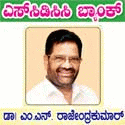What Anna Hazare’s new plans mean for democracy
9:50 AM, Tuesday, August 30th, 2011 That the political philosophy of Anna Hazare closely resonates with the overall anti-democratic Hindutva ethos owes, in part, to the Brahminical worldview that they share, says Yogi Sikand
That the political philosophy of Anna Hazare closely resonates with the overall anti-democratic Hindutva ethos owes, in part, to the Brahminical worldview that they share, says Yogi Sikand
Much to almost everyone else’s relief, Anna Hazare has finally called off his fast. However, he has now announced that his struggle for the Jan Lokpal was just a precursor to more campaigns which he soon plans to launch, including to change the country’s electoral laws and education system.
What drastic changes in these sectors he proposes remain to be seen, but they would obviously be entirely in keeping with the man’s overall political philosophy. Little has been written about that philosophy, however, although sections of the Indian media have been aggressively promoting Hazare as the next MK Gandhi, and even as the ‘voice of India’ .
Probably the best way to understand Anna Hazare’s political vision is through an examination of his experiments in seeking to transform his home village of Ralegan Siddhi in Maharashtra. Some months ago, noted activist Mukul Sharma penned a detailed article in the popular web-magazine kafila.org wherein he described in detail Hazare’s methods and approach to village development. The article was based on Sharma’s years of field research in Hazare’s ‘model village’.
Although Sharma concedes that under Hazare’s leadership the village has witnessed considerable economic development and has done wonders in protecting the environment, he notes that this was made possible through a system of moral enforcement that is deeply authoritarian — some would even call it dictatorial. Though Hazare was able to use his charismatic authority to bring about noticeable economic and environmental changes, his methods and approach appear deeply problematic from the point of view of democracy, liberty and equality. Sharma notes that Hazare ‘holds absolute power and command in his village’. And that power, he explains, does not hesitate to employ ‘coercion and possibly suppression’, if moral suasion does not suffice, in order to have its objectives fulfilled.
Hazare, Sharma writes, likens this power to a mother who is (supposedly) entitled to slap her child, for his own good, when he makes a mistake, and whose right to do so is unquestionable. Thus, force is seen as ‘an integral part of an environmentally sound and socially harmonious society’. In Ralegan Siddhi, Anna Hazare, so Sharma tells us, has resorted to such force for what are widely perceived as noble purposes. Sharma speaks about villagers consuming liquor being tied to a pole in front of the village temple and flogged; of a Dalit denizen of the village being scolded by Anna Hazare and apologising to him for installing a dish antenna in his house and watching cable television; and of others being forced to adopt family planning.
Yet, the principle itself is deeply problematic, for others can easily use it as a cover-up for a fascist dictatorship that arrogates to itself the right to choose what is good for others. For the historically oppressed castes, Sharma notes, this forced acquiescence ‘can be highly Brahminical and hegemonic’. Thus, Anna and his men drove — Sharma here speaks of ‘constant hammering’ -the Dalits of the village to give up non-vegetarianism, which they castigated as ‘dirty’.
Sharma further elaborates on the political philosophy that characterises the relationship between Hazare, as the arch-typical village patriarch, and the denizens of Ralegan Siddhi, his devoted followers. This relationship is based, Sharma says, on a belief system where the latter ‘consider it their natural duty to obey, and the exercising person thinks it a natural right to rule’. Needless to say, this conduces to hero worship and blind following, for whatever the leader says. Needless to say, a fascist would find this logic eminently suitable.
Military metaphors are deployed to characterise this relationship between what can be regarded as a benevolent dictator and the masses. Sharma quotes a former village sarpanch as declaring: ‘Whatever Anna says, we do. The whole village follows his words. Anna’s orders work like the army.’ Others go so far as to elevate Anna Hazare to divine status, whose every word is thought to be absolute and binding, and in the face of which no dissent can be conceived. Thus, Sharma quotes another denizen of Hazare’s village as saying, ‘Annaji is like God. Whatever work he will assign, I will fulfill. Annaji has become my nature, my habit. He is my heart.’
Fascist paternalism is based on the notion of the infallible leader, who is attributed with supposedly divine or infinitely superior wisdom and foresight and is thought to know the best for his people. Accordingly, his word is the unquestionable law. ‘Unity’ under the ‘benevolent, all-powerful’ leader is constantly stressed, even through the use of force, if necessary. Everyone must unite and commit themselves to implement the leader’s will, for this is said to be for their own good. ‘Unity’, compelled and privileged in this way, brooks no dissent.
Uncanny shades of this are clearly evident in Sharma’s description of the Ralegan Siddhi experiment, where he notes the enormous stress on ‘a common will, an all-pervasive concept of unity’, which ‘can be created through logic and/or coercion’.
A crucial political implication of this stress on village ‘unity’ under Hazare’s leadership is the dismissal of the worth of electoral democracy, through which competing interest groups and factions jostle with each other for power. Thus, Sharma notes, in most of the villages under Anna Hazare-inspired programmes, ‘elections are not welcomed’. There have been no elections to the gram panchayat in Ralegan Siddhi since the last 24 years. No elections have been held in cooperative societies as well. Instead, the representatives are nominated.
Hazare defends this on the grounds that elections ‘bring party politics and divide the people’. ‘Anna Hazare’, Sharma notes, ‘takes every possible opportunity to sharply question electoral and party politics. There is no space for formal structures of democracy here. In the village, there is no poster or pamphlet allowed during the state/national elections. No direct election campaigning can take place.’ Political parties are not allowed to set up their units in the village.
Given this obvious visceral hostility to party politics and electoral democracy that are seen to undermine the so-called ‘unity’ of the village, and the preference, instead, for nominating leaders through supposed consensus, the implications for democracy, particularly as far as the religious minorities and the historically oppressed castes are concerned, of the campaign that Hazare has now threatened to unleash at the all-India level for changes in the electoral laws, urgently deserve detailed attention.
The mythical and romantic conception of the ‘unity’ of the village that Hazare repeatedly invokes clearly ignores and probably deliberately seeks to paper over internal caste-class contradictions. This has important implications for the subaltern classes/castes, whose voices for justice and equality can easily be critiqued as threatening to fracture this presumed ‘unity’. The logic of such ‘unity’ can easily be co-opted to justify Brahminism and continued ‘upper’ caste hegemony — which explains, to a large extent, why Hindutva forces have begun backing Anna Hazare in a big way and, on the other hand, why Dalit groups have clearly denounced his movement.
That the political philosophy of Anna Hazare closely resonates with the overall anti-democratic Hindutva ethos owes, in part, to the Brahminical worldview that they share. Thus, Sharma notes the centrality of Brahminical Hindu beliefs and institutions in Anna Hazare’s overall project. Hazare began his village development work along with the rebuilding of the village temple, which has been at the centre of his activities.
The renovation of the dilapidated village temple in his village ‘proved the best way’ for Anna Hazare to achieve a ‘sense of collective identity’, Sharma writes. This ‘gave people an emotional unity, a sense of oneness, of an inner self with God.’ Decisions taken at the temple, where village meetings were held, were ‘believed to have the sanction of God’.
The image of Ram, key Brahminical icon, appears central to Anna Hazare’s political vision, just as it is in the Hindutva imagination, indicating much shared ground.
‘According to Hazare’, so Sharma writes, ‘Lord Rama set an ideal before every citizen of how to conduct everyday life by his own example.’ Hazare also considers it ‘possible to reincarnate a familiar, earthy God by a legitimate authority.’ Can such a God-like ruler at all tolerate any sort of dissent? The punishment that Shambukh the Shudra saint had to face in Ram Rajya for daring to dissent against Brahminism by engaging in deep meditation or tapas and thereby transporting himself to devalok, the realm of the gods, was to be beheaded by none other than Ram himself, so Valmiki authoritatively tells us.
Anna Hazare’s authoritarian political vision thus has crucial implications for the Dalits and other oppressed castes, who are increasingly seeking to fashion electoral democracy into a potent tool to resist centuries’-old Savarna Hindu hegemony and to win, in however limited and flawed manner it may be, their rights. The enormous stress that is placed on ‘unity’ (whether at the village or national level) in Anna Hazare’s discourse can easily be deployed as a means to denounce and crush Dalit dissent or struggles against caste Hindu domination — in the name of upholding ‘unity’. Anna Hazare himself might not do this, but who is to stop others, inspired by his political vision, from doing so?
The denigration of electoral democracy, and, in its place, the glorification of the benevolent leader as divinely-inspired hero, and the imposition of social ‘reform’, reflecting Brahminical norms, all of which Sharma observes are central to Anna Hazare’s political project, have a crucial bearing on the struggles of Dalits and other oppressed communities for social justice. It is true, as Sharma points out, that in Ralegan Siddhi Anna Hazare has been decrying untouchability and that ‘there have been several efforts on his part to do away with the ban on Harijans’ entry into the temple and to allow them to take water from the same well’ (We are not, however, told if these efforts have succeeded).Hazare has also made it a point to involve the Dalits of the village in committees formed to run the village affairs and to take part in several village functions and festivals. In many economic programmes, they have been chosen to be the first beneficiaries.
Yet, Sharma notes, despite Hazare’s efforts to soften the rigours of caste in Ralegan Siddhi, its impoverished Dalits continue to remain heavily marginalised. Sharma revealingly quotes a landless Dalit inhabitant of the village as saying: ‘We do not call Ralegan Siddhi a village. We call it a family in which Annaji is the headman and we are the people who provide service to the family. Here Hindus mean Marathas only. We Chamars and Mahars are never called Hindus. How can we claim that everybody is equal here? People who have land or jobs in the military have a different level of development. There is a lot of difference between them and me.’
Sharma refers to another Dalit from the village, who was injured in police firing in the course of an agitation but who was taken care of by Anna ‘like a mother.’ He and other members of his caste, Sharma says, ‘are now free from the clutches of moneylenders and he is a devotee of Anna.’
Yet, even this man remarks: ‘We have food, clothing and house now. But that is all. There is nothing more to it than that. Shoes are for feet and will always be placed there. We will never be able to go ahead beyond this point. The village ethos is like this.’
Yet another Dalit denizen of this supposed model village, a landless labourer, relates:
‘I was poor before and am poor now. We were starving in the past and the situation has not changed for me. I cannot even afford the education of my children. I cannot even open my mouth. Whatever is said in this village, it has to be followed.’
Anna’s reformism thus clearly has its limits as far as the Dalits are concerned. Reforms to mitigate the brutality of life for Dalits in village India may be acceptable to an extent, but not such as might threaten the ‘unity’ of the village or the hegemony of the dominant castes. This, it would readily appear, is distinctly at odds with the Ambedkarite approach to Dalit empowerment. Not surprisingly, therefore, Sharma finds that in Ralegan Siddhi, the Dalits are ‘largely still tied to their traditionally given status and occupation. Simultaneously, possession of land, utilisation of water, labour relations and wages, and other forms of power exist and work against the Dalits. Notions of Dalits being “dirty” still prevail. And the village republic works in such a way that broader values and codes assigned within it are never challenged.’
That this is the case in Hazare’s ‘model village’ is hardly surprising, because, following Gandhi, Hazare himself seems to believe that the caste system is in itself unproblematic. Thus, he declares: “It was Mahatma Gandhi’s vision that every village should have one Chamar, one Sunar, one Kumhar and so on. They should all do their work according to their role and occupation, and in this way, a village will be self-dependent. This is what we are practising in Ralegan Siddhi.’
Anna Hazare has, so the newspapers say, announced plans for a new mass movement — this time for changes in the country’s education system and electoral laws, although the media has not highlighted what exactly these would entail. But, clearly, given the critical implications of his overall worldview for electoral democracy, secularism, social justice and Dalit empowerment, not everyone will be enthusiastic about the changes he dreams of imposing on the rest of the country.
Simillar Posts
Leave a Reply
© Copyright 2008 www.megamedianews.com All Rights Reserved. Privacy Policy








 Posted in
Posted in  Tags:
Tags: 



